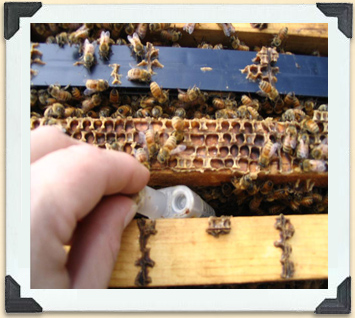The Keeper

The new queen in her travelling cage is inserted between two frames: her new colony of bees get used to her smell, chew through the seal and release her.
© University of Manitoba
Queen Replacement
If the queen is weak, dies or leaves with a swarm, the colony or the beekeeper needs to replace her. The colony will feed only royal jelly to some of the developing larvae in order to produce a new queen. The first queen to emerge then needs to kill her rivals. However, to reduce the amount of time lost in egg production, it's often best for the beekeeper to introduce a new fertile queen.
The beekeeper orders a new queen from a bee supplier-she may even arrive in the mail! She comes in a "queen cage," surrounded by about ten worker bees that are taking care of her. The beekeeper puts the entire queen cage into the hive, so that the queen is protected from the colony until they begin to accept her scent. Within a few days, her pheromone has spread through the colony; she's no longer a stranger but, rather, is accepted as the colony's new queen, and can be released into the hive.





